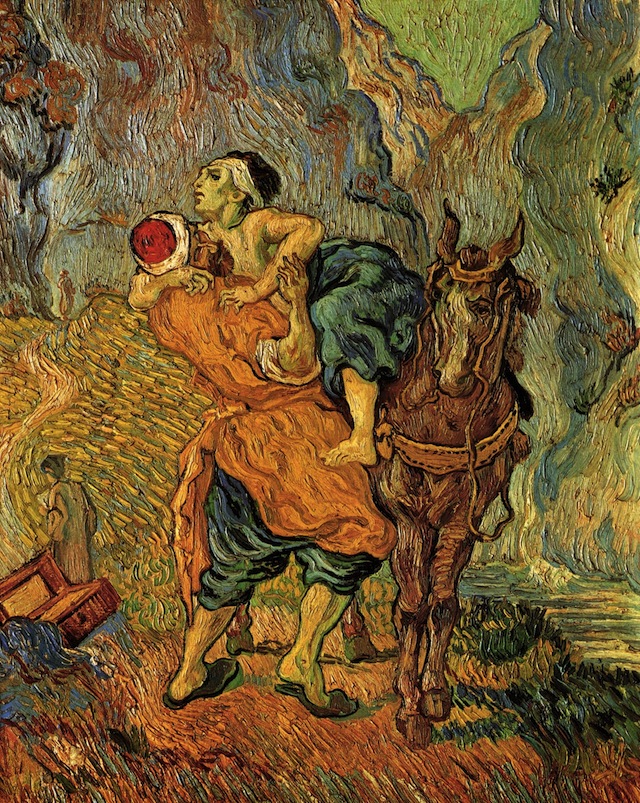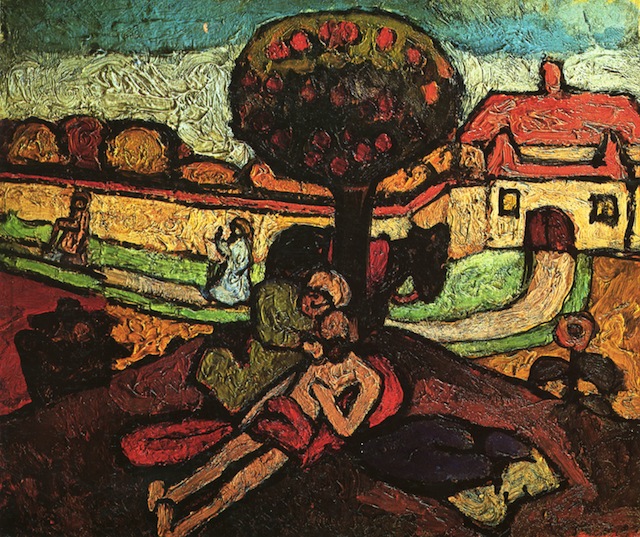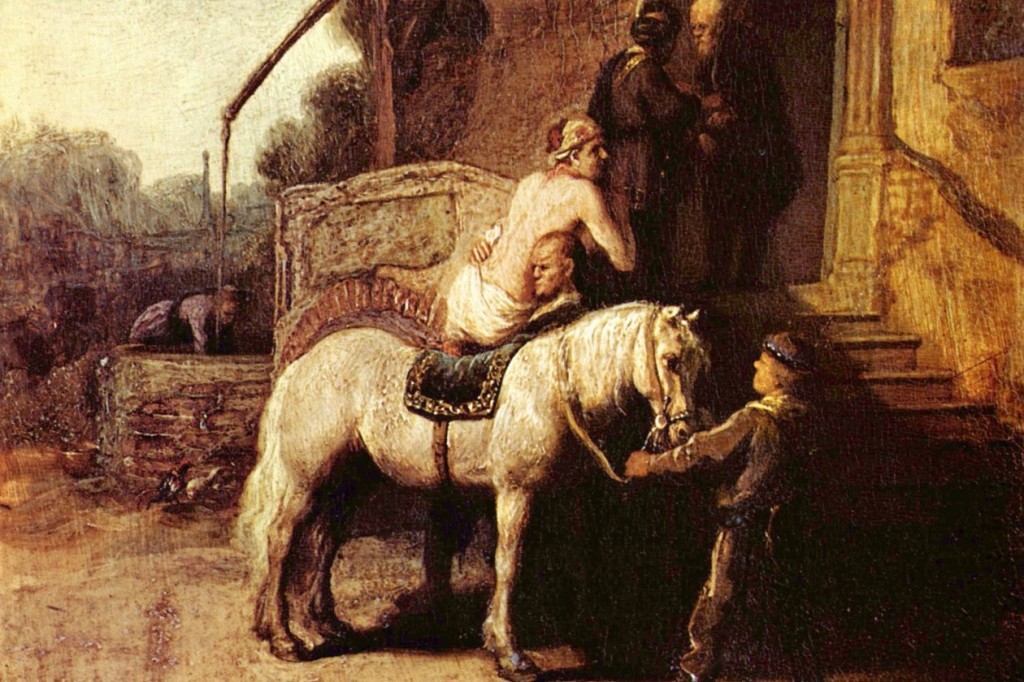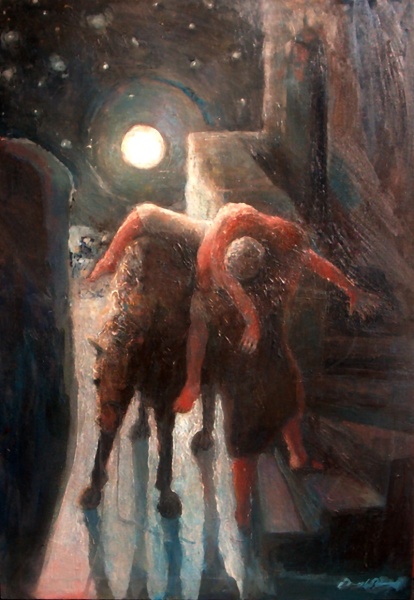Art: The Good Samaritan
The story of the Good Samaritan has two scenes. Scene One takes place on the dangerous Jericho Pike. Most artists depicting the Good Samaritan parable focus on this scene. The Samaritan is kneeling over the victim or hoisting him onto a beast of burden. You can usually find the priest and the Levite in the distance with their backs turned toward the action.
Here are a few such renditions.
The first is by Van Gogh painted in 1890. The priest is in the distance, the Levite a bit closer. The Samaritan is actively helping the victim. Van Gogh is copying the work of Delacroix from 41 years earlier. Delacroix painted this topic more than once.
Here are two works by Delacroix showing two moments in the scene. He painted the one Van Gogh was copying first (1850). The other was painted in 1852.

 Below are some more modern depictions of the same scene.
Below are some more modern depictions of the same scene.
The colorful work by Paula Modersohn-Becker was painted in 1907—not long after Van Gogh’s.
Here is a surprisingly youthful depiction by 82-year-old English artist Dinah Roe Kendall. Looks very British! The priest and the Levite have their umbrellas to protect them from coming unpleasantness. Notice how different the Samaritan is from the other English actors in this scene.
At last we turn to Scene Two in the Good Samaritan. This scene takes place at the innkeeper’s door. Here is Rembrandt’s work from 1630 and a second, The Moon and the Good Samaritan, by contemporary artist Daniel Bonnell.
The final rendition is by Texas painter, James B. Janknegt. It is entitled Portrait of You as the Good Samaritan. Do you see yourself anywhere? (If not, why not?)






